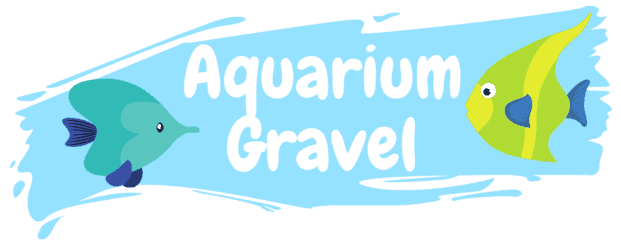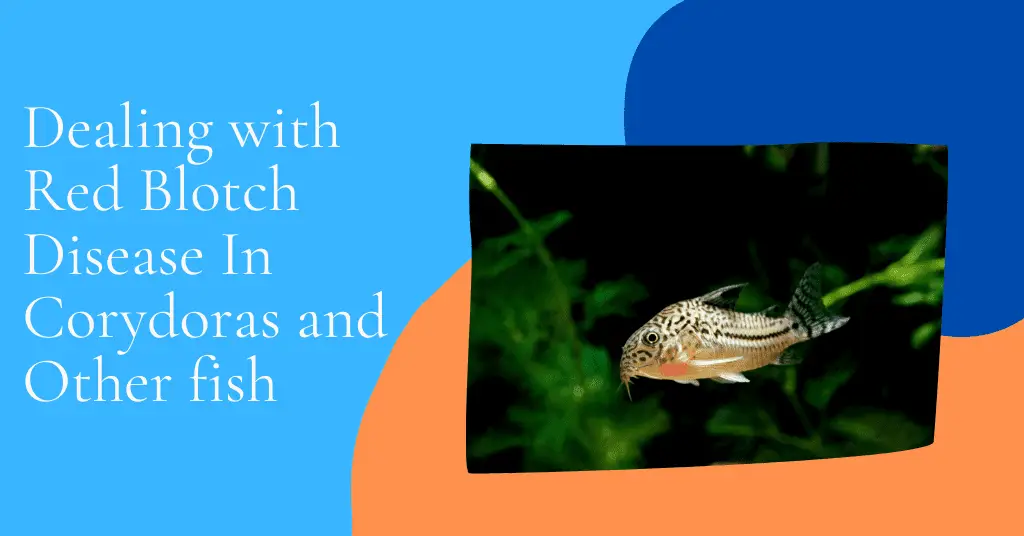Last Updated on August 5, 2021 by cmoarz
Red blotch disease in corydoras is fairly common and can be caused by a plethora of things, from a scratch, a bite, a scrape, or even just high nitrate levels. Luckily red blotch disease is super easy to deal with if caught early, and you won’t even need medication or antibiotics.
To cure your cory red blotch disease corydoras, all you need is to give them a salt bath for 15-30 minutes. Within 24 hours you will notice a big difference in the way she acts.
In a separate container, add 12 grams (2 American tsp) of aquarium or kosher salt to 1 liter of dechlorinated water, mix until completely dissolved. Place your corydoras into the water bath for 15 to 30 minutes. This should clear up the bacterial infection causing red blotch.
How and why it works:
Table of Contents
Salt, as an antiseptic and antibiotic, will kill the bacteria that cause red blotch disease and effectively cleans out the wound.
The salt will also activate a protective slime layer over the cory that will continue to help keep any new bacteria from forming for a time.
You will need to take precautions in dealing with the cause of the red blotch so it doesn’t happen again, which you can read lower in this article.
Words of warning
As scaleless fish, Corydoras are fairly sensitive to saltwater, However, it’s a myth that saltwater will cause their skin to burn. Cory’s have a strong armor plating that prevents this.
Even so, you shouldn’t keep them in the saltwater bath for longer than 30 minutes at a time.
If they show any signs of stress, such as swimming sideways or flipping over (losing balance) you should take them out of the bath and place them in freshwater immediately, and adjust the salt levels to be lower.
If symptoms do not subside, or you still see red blotch on the corydoras after a saltwater bath, please consult your veterinarian. You may need medication if the red blotch was not caught early enough.
If all goes well, you should see a drastic improvement with the corydoras catfish behavior within 24 hours or as fast as over night and will appear to be fine once again.
As for other fish, Not all scaleless fish will be able to cope with a strong saltwater bath like corydoras catfish. Snails, shrimp, etc will not do well. Nore should you do this with other very salt-sensitive fish.
You should not dose your full aquarium, but rather use a gallon bucket, or hospital/quarantine tank instead.
Other fish like rasboras, danios, tetras, silver dollars, cichlids will be fine in a saltwater bath and are very tolerant to the salinity levels for a short time.
What causes red blotch disease in corydoras and other fish?
Red blotch disease generally can be caused by a bacterial infection. It can be caused by damage or poor water quality.
Bacterial Infection: Corydoras have sensitive skin that is easily damaged. Red blotch disease starts off as a small bruise and usually appears in the lower torso area (chest) on your cory.
Since cories spend all their time rubbing their bellies against the substrate and decorations in your tank, Sharp, jagged or pointy gravel and rocks can cause scrapes or cuts in their soft skin.
Skin injuries will often end up with bacteria invading the wound and causing a large, swollen red bump.
The corydoras catfish immune system cannot fight off this bacteria fast enough and it spreads through the body rapidly. This leads to shaking, fin rot/damage, loss of appetite, and lethargy which is associated with bacterial infections!
Antibiotic treatment is necessary to combat these types of infections if they are in the late stages, otherwise, a salt bath is very effective in combating the cause of red blotch disease!
How to prevent red blotch disease from returning
There are multiple things you should do to prevent the bacteria from returning. The best thing you can do is to prevent damage to the cories’ skin in the first place.
Change your substrate to a cory-friendly alternative such as sand or fine gravel. Avoid rocks or sharp objects that might cut the skin of your pet corydoras.
Avoid heavier substrates or substrates that have a lot of porous holes in them that their whiskers can get caught and ripped off or ground down via mechanical injury.
Corydoras catfish are notoriously sensitive to nitrate levels. High nitrates can cause skin damage with which bacterial will attach. Try to keep nitrates down below 20ppm, ideal 10 ppm. This is more manageable in a larger tank, and you will have a hard time in 10-gallon tanks. Ammonia 0, nitrites 0.
Remove rough decorations, Use lots of plants and driftwood, for they are soft on the skin.
Plants will also make your tank appear very natural and help reduce stress for your cories as well as help lower nitrate levels.
Water conditions are a large part of this, too warm, too much ammonia, or nitrates can all cause red blotch. So always keep an eye out for your water quality.
Be sure to have an air stone bubbler to add extra oxygen into the water, as well as a strong filter to remove any extra waste that could harbor bacteria.
Sign your corydoras catfish has red blotch disease
In the beginning stages of red blotch disease, You might not notice any actual red spot. They may be small or hidden beneath the corydoras catfish belly.
The easiest method to spot the infection is by how your cory is acting.
If she’s lethargic, sitting off alone in a corner, avoiding other fish, even ones of her own species, and not eating, and looks like overall she’s not interested in anything, It’s very possible she might be developing red blotch.
If left untreated, a cory will likely die within the week. Luckily treatment is easy and you shouldn’t lose her unless you are unable to provide the proper care or don’t notice in time.
Red blotch is generally not considered contagious without a lot of direct wound-to-wound contact, which should be fairly rare.
Conclusion
If you noticed the red blotch disease early enough in your corydoras catfish or other fish, You can easily treat it without antibiotics or other expensive treatment.
If the salt bath does not work, and the disease is too advanced, then you will need to consider heavier hitting medications.
If those do not work, then it might not be red blotch at all and could be a fungus or parasites. Although the saltwater treatment does well to do away with both of those things as well, it’s not always 100% effective on fungus and all parasites.
If all does go well, You will once again have healthy corys within 24 hours.
You can view the backstory as to why I wrote this article here
About
Owner of AquariumGravel.com and also owner of actual Aquarium Gravel believe it or not! ;). Setting up beautiful aquarium sceneries and habitats since I was very young. Enjoy!
- Web |
- More Posts(290)

